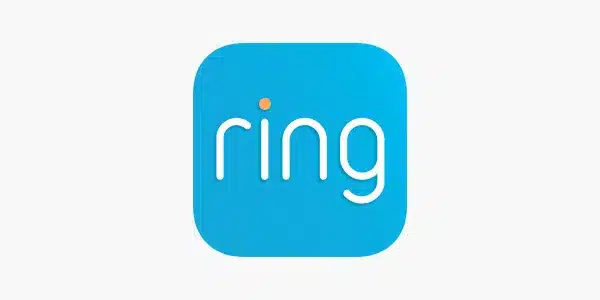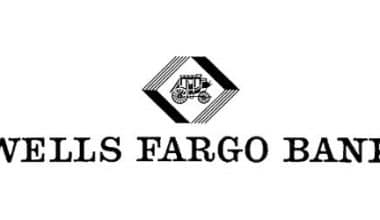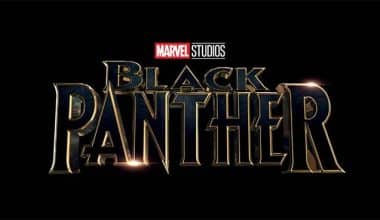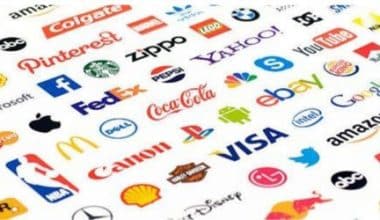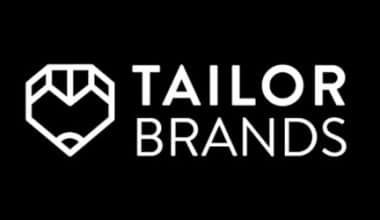You don’t have to be a Shark Tank fan to recognize the Ring. The Ring security doorbell has grown in popularity since the company’s inception in 2012. So, whether you own a Ring product or know someone who does, you’re probably starting this article with some knowledge of what this brand has to offer.
What you might not be aware of is how the brand came to be. And if that describes you, you’ve come to the right place. The Ring doorbell has taken the world by storm, and any company that can do so can teach the rest of us a thing or two. Ring’s popularity stems in large part from its iconic logo design, and as a result of that design, Ring’s logo and the brand now go hand in hand.
In this article, we’ll look at the evolution of the brand and why Ring’s logo has helped them build brand loyalty with their customers. By the end, you’ll be ready to apply what you’ve learned from Ring to your own company’s logo design.
Overview
Jamie Siminoff founded the company Ring. Ring is a video doorbell that notifies you through the traditional “doorbell” sound and your smartphone. Anyone who installs a Ring doorbell benefits from this integration with their smartphone.
While Jamie founded the company in California, he was born in Chester, New Jersey, in October 1976. He graduated from Babson College with a degree in entrepreneurship. This degree makes sense now that we know Jamie founded Ring. He also regularly created things in his childhood garage and experimented with different products.
Jamie’s first company, Your First International, existed before launching Ring. This company was dedicated to assisting entrepreneurs in realizing their dreams. In 2005, he launched a second company called Phone Tag. Phone Tag was the first voicemail-to-text service, and Ditech Networks purchased it in 2009 for $17 million. Before Ring was officially founded, Jamie used the money from this purchase to start a few other businesses.
Jamie founded Ring after becoming frustrated with missing package deliveries due to his wife’s inability to hear their doorbell. When Jamie first started Ring, he named the company Doorbot. Jamie didn’t rename Doorbot Ring until after he appeared on Shark Tank. He changed the name of his company because Doorbot sounded more tech-focused, and he wanted a timeless name that directly related to the company’s mission. The name “Ring” was suggested by Upfront Ventures’ Hamet Watt. Hamet believed that this new name would be a perfect fit for the brand. Jamie ultimately chose this new name because it represents a doorbell and conveys the company’s security mission. Jamie immediately purchased the domain name for $1 million due to his decision.
The Meaning & History of the Ring’s Logo
At first glance, a company’s logo may appear to be a simple emblem that comes together quickly. But if you know anything about logos, you know that’s not the case. Graphic designers and creative professionals have a plethora of graphic design tools at their disposal, and every decision they make is deliberate. That is, when a logo is finalized, the decision to use that design as the company’s face was carefully considered and deliberate.
The Ring’s logo was purposefully chosen from the start and is still in use today. The logo has never been rebranded in the more than ten years since the company was founded and the logo was first introduced. Ring has become a trusted brand, thanks in large part to its logo, and the logo has assisted in creating a community of loyal customers.
While the logo has remained unchanged over the years, let’s dig deeper into the design elements.
2012-Present: The Ring Logo’s First (And Only) Version
When viewing Ring’s logo, you will notice minimalist and classic design elements that work together to create an aesthetically pleasing design. The company name is written entirely in lowercase letters in the wordmark. The font has an ultra-thin weight with subtle curves, and the font colors were chosen to mimic those found on a Ring doorbell. The logo is sometimes highlighted on a bright background, such as blue, but it is usually found on a neutral, white background, allowing it to shine.
Ring Logo Font
Matt Desmond created the font for the Ring logo. Matt designed this variable sans-serif bold font in various weights and styles. Overall, this font is neat and appealing. This font is adaptable to whatever marketing medium it is printed on and has become the brand’s face.
Ring Logo Color
You’ll notice three different colors when you look at the Ring logo. Each was chosen for the various emotions they evoked.
The lettering is in the color black. The color black is frequently used to convey mystery, strength, authority, and elegance. Blue is another color used in the logo. Blue, like black, was chosen as an accent color for the lettering, specifically with the “i” letter. The blue dot on the top of the letter “i” represents loyalty, confidence, stability, and sincerity.
White is the final color used in the logo. This neutral color choice was chosen to be the logo’s background. This color contrasts with black and blue and is often associated with feelings of safety, protection, perfection, purity, goodness, and cleanliness. Each of these colors conveys feelings that are essential to the brand.
Ring Symbols
While it’s easy to confuse it with the dot on the top of the letter “I,” the dot is a round shape – a ring. This Ring was chosen to symbolize a doorbell, which represents the brand. A ring can also represent community, unity, eternity, and completeness. These are all positive emotions that Ring wants its customers to have, making this symbol selection a logical choice.
The Evolution of the Ring
2011-2012: The Ring is established.
Jamie Siminoff founded Ring in 2011 in response to a problem he was tired of dealing with. Jamie kept missing deliveries because his wife couldn’t hear the doorbell. He decided to create his product after failing to find a doorbell connected to his smartphone to solve this problem.
When it came time to create the product, Jamie collaborated with some developers and engineers and built it in his garage. Doorbot was the original name for the Ring doorbell.
2013- Jamie appeared on Shark Tank
Jamie appeared on Shark Tank in 2013 to gain momentum to launch his product. Jamie went on the show hoping for a $700,000 investment, but none of the “sharks” bit. He pitched it on the show as what it is today: an American company specializing in home security and protection products. Jamie’s Shark Tank episode drew the attention of investors, and he renamed his company Ring shortly after.
2014- The First Ring Doorbell Was Sold
Jamie’s appearance on Shark Tank increased demand for the product. The first Ring doorbell was sold in 2014, two years after the company was founded.
2015- Ring Introduced the Stick-Up Cam
One year after Ring’s popularity soared, the company unveiled its following product, the Stick-Up Cam, a wireless IP camera. This camera was constantly improved, and three years later, it was outfitted with motion detection, two-way audio, a cylindrical design, and the ability to run on battery, wires, or solar power.
2016- Shaquille O’Neal invests in Ring
While Ring already had several investors (including Richard Branson and Goldman Sachs), Shaquille O’Neal purchased a stake in the company in 2016. Shaquille became the company’s face thanks to his investment, and Ring raised more than $200 million from investors.
2017- Floodlight Cam was Introduced
Ring released a Floodlight Cam two years after the Stick-Up Cam. This security camera features motion-activated LED floodlights.
2018- Ring was Purchased by Amazon
Jamie decided to sell his company to Amazon in 2018 to make money. After seeing Jamie on Shark Tank, Jeff Bezos became interested in the company. The purchase price was approximately $1.2 billion, and under Amazon’s ownership, the company released Ring Alarm, an alarm security system. A keypad, siren, and motion sensors were all part of this system.
Obstacles in the Way
Ring’s most difficult challenge is converting existing customers into repeat customers. For example, how do you retain a customer who has purchased a Ring doorbell? Ring decided to expand its product offerings to attract these customers. After purchasing a Ring doorbell, a customer can also purchase a security system and lighting products for the rest of their home or the outdoors.
What Was the Original Name of the Ring?
Initially, Jamie Siminoff and his engineering team introduced the brand to the public as Doorbot. A company manufactures video doorbells to provide security to its customers. However, Hamet Watt of Upfront Ventures, an investor, suggested Ring.
Hamet thought the name was ideal for a doorbell tone and home security. Without a doubt, Jamie saw merit in the name and adopted it. To maintain a distinct identity, he paid $1 million for the domain name www.ring.com.
When did the Ring Doorbell first appear?
Ring’s founder, Jamie Siminoff, came up with the idea in 2011. Because his wife couldn’t hear the doorbell ring, he missed several mail deliveries. To avoid this problem, he looked for a doorbell connecting to his smartphone. He couldn’t find any to purchase.
As a result of his desire to know who is at the door whenever he works in the garage, he created this novel product. Finally, in 2012, he founded the company and sold the first video doorbell in 2014. It’s worth noting that he worked on this project with an engineering team.
How Do I Decide Which Generation My Ring Doorbell Is?
It’s simple to determine the model of your doorbell. Importantly, knowing this information will allow you to find compatible accessories for your device. You would eventually save time and money. Now, to find the model of your product, please follow these steps:
- Tap the three lines in the upper left corner of your screen.
- Then, tap the devices.
- Now, choose the device you want to learn more about.
- Check the device’s health.
- Then, look for device information.
- Finally, under the product name, you’ll find your device model.
What Is the Distinction Between Ring 1st and Ring 2nd Generation?
Ring’s generation one and two security devices. Based on customer feedback, the company created the generation two device. As a result, the outlook has improved. Regarding functionality, however, both provide the same level of protection and security. However, there are several distinctions in terms of features. However, I’ll concentrate on just five of them below:
The second-generation device is smaller in size. It’s keypad and contact sensor are approximately 38% smaller than the first generation. It’s sleeker overall, making it easier to install on walls.
- The Battery—Three lithium batteries power the first-generation device. On the other hand, the second generation device is powered by two CR2032 coin cell batteries.
- The Space—The sensors have a smaller gap in the first-generation device. The second-generation sensors, on the other hand, have a larger space for mounting.
- The Keypad Space—The buttons on the first-generation device are closer together, making it easier to press the wrong buttons. In contrast, the correct keypads on the second generation are quite easy to press because they are circled-shaped and well-spaced.
- The Emergency Button—This may be one of the most significant differences. While the first-generation device did not have an emergency button, its successor did. These buttons connect you to police, fire, and medical assistance.
Ring Today
The Ring doorbell, as mentioned earlier in this article, was founded in 2012 by Jamie Siminoff and is a company that specializes in home security devices. The ring was originally known as Doorbot and only produced video doorbells when it was founded, but the brand has since expanded its reach to include other products. Today, they offer bright lighting, high-tech security cameras, entire security systems, doorbell accessories, and much more.
Shark Tank was responsible for much of the Ring’s early success. Jamie was given free advertising when he appeared on the show, and having access to viewers worldwide helped bring his product to the attention of millions of people. Following his appearance, the doorbell grew in popularity (and demand), attracting investors worldwide.
Ring’s headquarters are in Santa Monica, California, close to the company’s founding. Ring now employs over 1300 people. Despite purchasing Ring for $1.2 billion in 2018, Amazon has not changed the logo. That’s most likely because Amazon understands that Ring brings a loyal customer base who associates the brand with the logo. Ring’s newest product under Amazon’s ownership is the Always Home Cam, which will be available in September 2020. This item is an indoor aerial camera that flies along a predetermined path that you specify.
Jamie is married to Erin Lindsey in his personal life. They married in 2006 and have a son named Oliver. Jamie is now worth $350 million.
Lessons Learnt
Just because a company hasn’t updated its logo in a long time doesn’t mean there aren’t lessons to be learned. Ring’s logo has never been updated, so what they created works. That means that as you design a logo for your company, you should incorporate some of the elements of this logo for your logo to be remembered.
The first thing that works for Ring is its simple logo. It has only three colors (one of which is a background color) and a simple font. This font is also legible and can be easily read from a distance.
Ring’s logo is timeless because it avoids trendy elements. Along the same lines, despite its simple design, Ring’s logo stands out and is eye-catching. Customers will enjoy looking at the logo and seek it out because it is visually appealing. The logo is memorable because of these appealing elements. The logo is also memorable because the design is adaptable and can be scaled up or down depending on the medium on which it is displayed. Even though Ring makes it appear simple, you can design a lasting logo.
Related Articles
- Best Buy Cyber Monday: Top 20 Cyber Monday Best Buy Deals
- What’s The Obsession With Precious Metals?
- Best 2023 Business Intercom Systems (+ Wireless Option)
- WEDDING RING INSURANCE: Should You Insure Your Wedding Ring?
- 2023 BEST 15+ WIRELESS SECURITY CAMERA SYSTEMS FOR BUSINESS (Updated)
